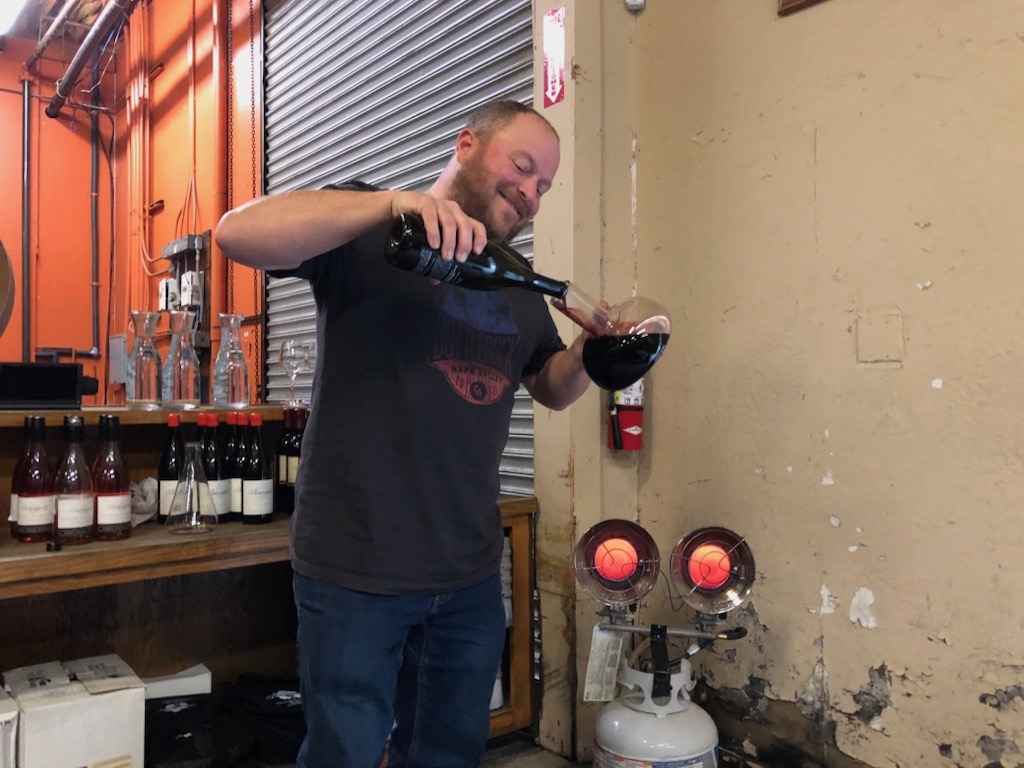
The time has come for Beauregard Winery to leave the corks behind. In an email to the wine club which Ryan Beauregard says he wrote while washing his trusty old Dodge pickup at the Scotts Valley Car Wash, he informs the faithful he’s ditched corks as a closure in favor of screw caps. Waxing poetical about the special beauty of the vineyard sites he farms at this time of year—Coast Grade, Bald Mountain and Beauregard Ranch—he explained his logic.
“I made the decision to move 100% of my bottlings to screw caps,” says Beauregard. “For the longest time, I have been disappointed knowing that the timeline on a wine’s age-ability was gravely dependent on the closure. Cork has such an inconsistency, no matter how good the quality of the cork.”
He bemoans the fact that there is a romance associated with corks and corkscrews and wishes that consumers would see screw caps for what they are: a superior way of preserving a wine.
“Screw caps simply are better closures and thus make better wine,” says Beauregard. “The wine will better reflect the terroir, the vintage, the varietal, and the wine will age much better. I know that screw caps do not look as sexy, but the functionality of the screw cap is so superior that I have made the move.”
He began the switch to screw caps with the 2022 vintage and all the 2023 wines will be bottled and finished thusly.

Beauregard reasons that his family has been farming wine grapes for 79 harvests and has invested 4 generations in this effort. This is a legacy worth protecting, something the Australians and Kiwis figured this out a generation ago. Almost all wines from New Zealand, including high-end reds, and upwards of 70 percent of those from Australia, are finished in screw caps.
“We farm some of the best sites in California: we even have our own AVA. We use the best farming methods that there are. We have chosen the best vines for the best place, which has taken generations of family knowledge. We use state-of-the-art tractors. The grapes come to the winery where we use premium equipment to craft our wines. I buy the best barrels on the planet. We spare no expense to make the best wine possible which is reflected in the numerous critics that review my wines. Then, after 8 decades and millions of dollars in investment, I am supposed to push a piece of bark into a bottle and hope for the best.”
He admits this might be an extreme opinion, and he doesn’t expect his colleagues to follow suit, but he’s not afraid to be a pioneer. Many of them, he says, have gone from traditional to composite corks, to hopefully reduce the percentage of cork taint, and to preserve that “opening the bottle drama” that might be fun for the person witnessing the act. However, try putting those composite corks back in the bottle.
Also, try pulling corks, especially on older wines, multiple times in preparation for an event, and you will find it gets tedious really fast. The perceptible joy on the faces of servers when you show up with screw capped wines for a festival is gratifying. You save them a lot of work, and you can lay the whites and rosés down in the ice buckets without fear of leakage.
Consumers are changing attitudes as well, realizing the convenience that screwcaps offer, from instant gratification to the convenient resealability factor. And screw capped wines fit into most fridges, unlike wines whose corks have been removed and then jammed back in.
Beauregard claims that most of his winemaking friends know that screw caps are superior, but are reluctant to make the transition.
“I came to a point in my life where I thought that the romance of opening a bottle was absurd. Why should the opening of the bottle be celebrated more than how well the wine will age over decades?” He felt that the failure rate of cork was sufficient to warrant this move. After all, it’s the wine itself that should be celebrated and not the act of opening it.
So get ready to enjoy fresher wines from Beauregard for longer: and you won’t need to worry about them being spoiled by cork taint as they evolve gracefully—and bark-free—into their fully mature selves.
About the author
Laura Ness is a longtime wine journalist, columnist and judge who contributes regularly to Edible Monterey Bay, Spirited, WineOh.Tv, Los Gatos Magazine and Wine Industry Network, and a variety of consumer publications. Her passion is telling stories about the intriguing characters who inhabit the fascinating world of wine and food.
- Laura Nesshttps://www.ediblemontereybay.com/author/lness/
- Laura Nesshttps://www.ediblemontereybay.com/author/lness/
- Laura Nesshttps://www.ediblemontereybay.com/author/lness/
- Laura Nesshttps://www.ediblemontereybay.com/author/lness/


